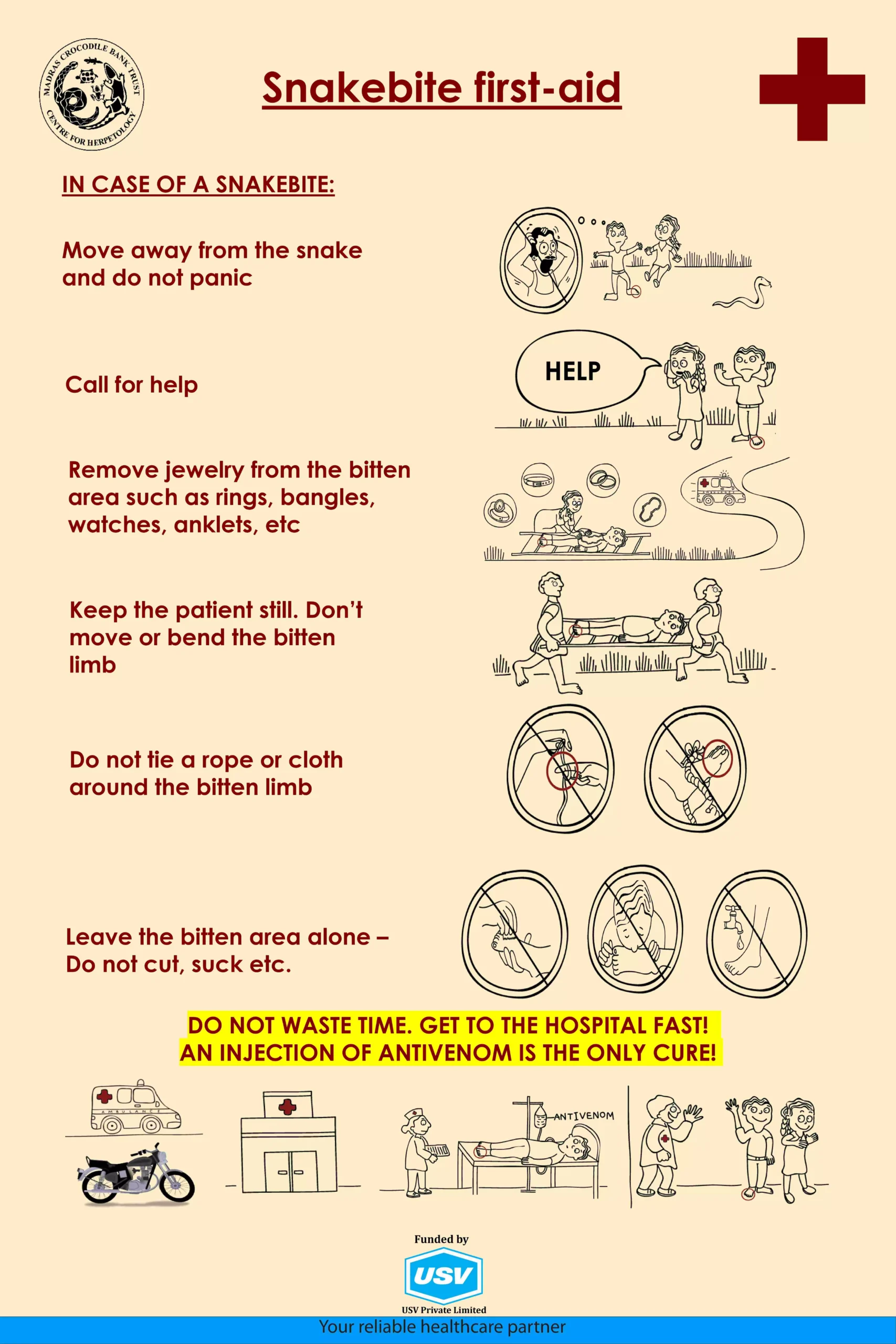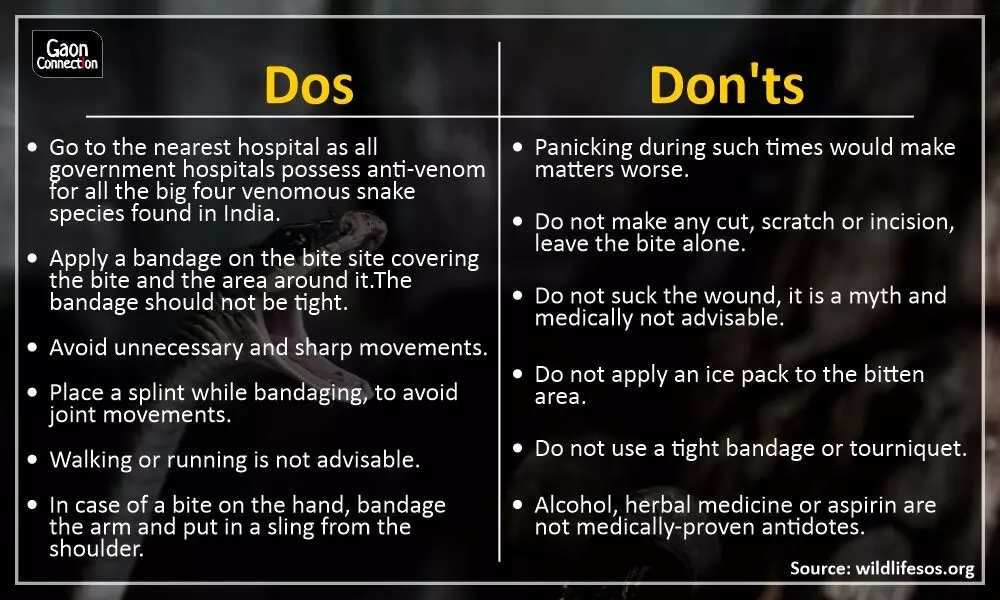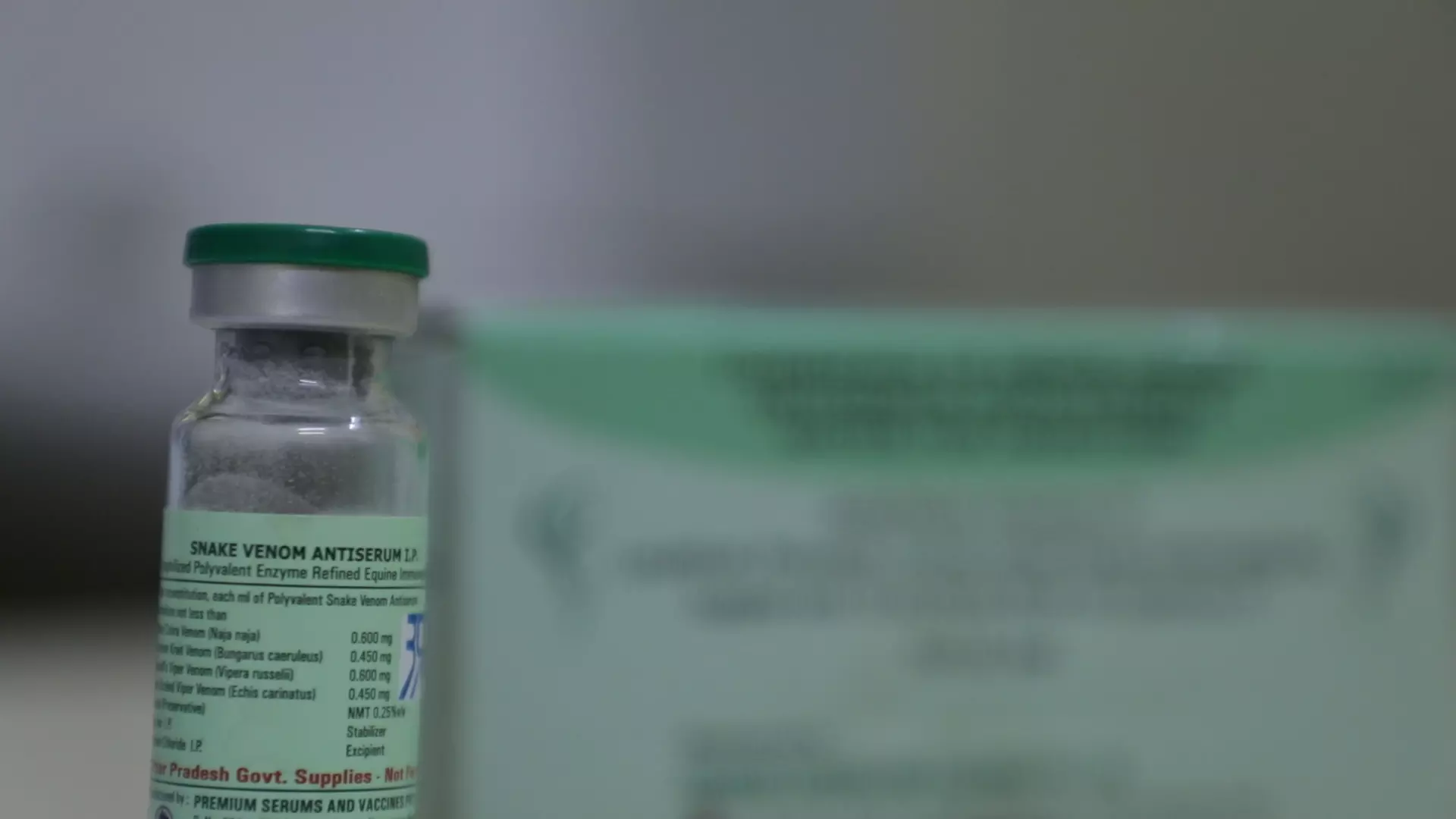Lucknow, Uttar Pradesh
Nearly 2.8 million people are bitten by snakes every year in India. Of these, on average 58,000 people lose their lives due to snakebites. Up to 94 per cent of these snakebite deaths are from rural India, according to a July 2020 study titled Trends in snakebite mortality in India from 2000 to 2019.
Time is of the essence, which is why the first hour after the snakebite is known as ‘The Golden Hour’ when with proper intervention lives can be saved. But, if there is a delay in administering the anti-snake venom, chances are the snake bite will cause grave organ damage, or prove to be fatal.
Watch
To raise awareness on preventing snakebite deaths, Gaon Connection has launched a campaign — The Golden Hour. As part of this month-long campaign, Gaon Connection interviewed Sourabh Jha, junior resident, who works at the Emergency Ward of Dr Ram Manohar Lohia Institute of Medical Sciences in Lucknow, Uttar Pradesh.
Jha explained dos and don’ts around snakebite; first aid treatment and importance of anti-snake venom.
Gaon Connection: What should be done if a person is bitten by a snake?
Sourabh Jha: We adopt a RIGHT approach in treating snakebite cases. RIGHT stands for Reassurance, Immobilisation, Getting to the Hospital, and Telling the treating doctor. We need to reassure patients that there is nothing problematic because most bites are non-venomous and even if it is a venomous bite, most are dry bites.
Second is, immobilise the patient because toxins flow increase if there is movement of the body. Lastly, try reaching the hospital as soon as it is possible and tell the treating doctor about symptoms.
We observe the patient for symptoms but if it is suspected that the snake was venomous then we administer ASV (anti-snake venom) as soon as it is possible. We generally administer 10 vials of Lyophilized solution which we mix with distilled water through IV. Further, different antidotes are administered based on the toxicity of the venom.

Source: Indian Snakebite Initiative
GC: How does snake venom affect the human body?
SJ: Venomous snake bite affects the human body in three ways – it can cause neurotoxic injury, hemotoxic injury or myotoxic injury. In neurotoxicity, a person faces difficulty in breathing and speaking, vision blurriness, and feels dizzy. Muscles get paralysed and brain cells get damaged.
In hemotoxicity, bleeding tendency increases. In myotoxicity, muscle injury increases because of that it blocks kidneys and renal shutdown happens.
Myotoxic snakes are generally sea snakes. Neurotoxicity is caused by cobra and common krait snakes while hemotoxicity is caused by vipers — russell’s, saw scaled viper, humped nose viper.
Snakebite cases rise in monsoon season. We are getting krait and cobra bite victims. Recovery generally happens. But in cases of neurotoxicity, damage to brain cells is irreversible.

GC: What first aid treatment should be administered in case of a snakebite? Should someone try and suk out the venom? Or, cut the bite and apply a tourniquet?
SJ: First, people around should reassure the patient. Because the patient becomes anxious, which in itself is an issue. Second is, don’t waste time by meeting quacks or faith healers or tantriks. Immobilise the patient, let them lie on a surface.
Avoid Tourniqueting, especially tight tourniqueting because it would stop blood circulation but if you apply light bandage then it could reduce toxic flow to some extent. But one should approach the hospital as soon as it is possible.
We forbid cuts in snakebites because first, chances of infection increases, you open a site for infection. Tourniqueting stops blood flow, and it could generate compartment syndrome — a painful condition that occurs when pressure within the muscles builds to dangerous levels.
The Golden Hour campaign: Street play organised to raise awareness about snake bites
GC: Why you should not go to a quack or occultist?
SJ: In snakebite poisoning, time is always crucial. Symptoms show in an hour or so. ASVs (anti-snake venoms) should be given as soon as possible.
Snakebite cases can get complicated and may need ventilator support. In neurotoxicity, oxygen does not reach brain cells and without oxygen, brain cells die, and a brain injury can occur. In such cases, we are able to tackle venom but the damage done to the brain is irreversible. So, timely treatment is crucial. One should not waste time by visiting quacks or faith healers.

On average, upto thirty vials of anti-snake venom are administered to a patient. Photo: Yash Sachdev
GC: How is anti-snake venom administered?
SJ: In India, a polyvalent anti-snake venom is produced for the treatment of envenomations from the ‘big four’ snakes — common krait, Indian cobra, Russell’s viper and the saw scaled viper.
Anti-snake venom is available in powder form and stored freeze dried. A solution is made by dissolving it in distilled water, which is then administered through Intravenous (IV) therapy. On average, upto thirty vials are administered to a patient. Firstly, we give ten vials and then wait for an hour to see for improvement and accordingly we administer another set.




















